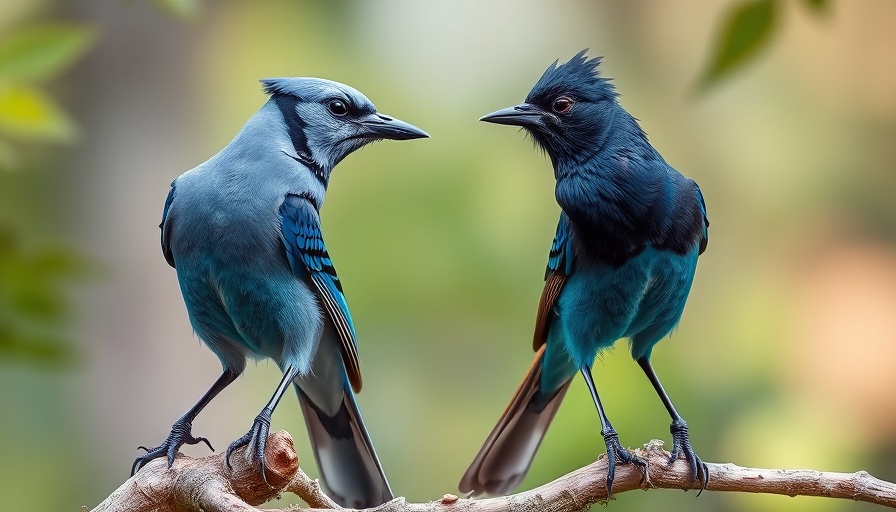
Understanding the Colorful World of Jays
It's a common sight: a blue bird flitting about, and one might easily wonder, "Which jay was that?" While the Steller's Jay and the Blue Jay share similar hues and a knack for mischief, they belong to different families. The Steller's Jay, primarily found in western North America, contrasts with the Blue Jay, which frequents the eastern landscapes. These birds aren't just visually striking; they pulse with personality, often dubbed the "bad boys" of the bird world.
Jay Personalities: Raucous and Resourceful
Curious observers have noted the intelligent behavior of both types of jays. They are true opportunists, exhibiting cleverness in seeking food and invading backyard feeders. Their playful yet somewhat aggressive nature aligns them more closely with crows and magpies than with more timid species. For instance, Thomas Nuttall, a 19th-century ornithologist, observed that Steller's Jays exhibit dog-like vigilance, constantly scolding passersby while keeping a keen watch on their surroundings.
The Misunderstood Immitators
Jays have a fascinating ability to mimic sounds, including the calls of raptors. This skill enables them to blend into their surroundings, often sending other birds into a panic. Despite their playful antics, the vocalizations of jays can sometimes lead to misunderstandings about their presence. Knowing how to distinguish a Steller's Jay from a Blue Jay comes down to more than just color; it requires an appreciation of their distinct calls and behaviors.
Why Identifying Jays Matters
Understanding the differences between these two species enhances our appreciation of biodiversity. The Blue Jay, predominantly eastern, boasts a more robust build compared to the slender Steller's Jay. Fostering this understanding can lead to better conservation efforts as we recognize the unique roles these birds play in their ecosystems. Birdwatchers, casual observers, and nature enthusiasts alike could benefit from developing their ability to differentiate between these fascinating creatures.
A Call to Bird Lovers
This exploration into the world of jays serves as an invitation for bird lovers everywhere. Next time you're outside, take a moment to observe and appreciate these vibrant creatures and their unique behaviors. Share your findings or stories, and continue to expand the dialogue about bird conservation. Remember, every bird sighting has a story—can you identify which jay was that?
 Add Row
Add Row  Add
Add 




Write A Comment